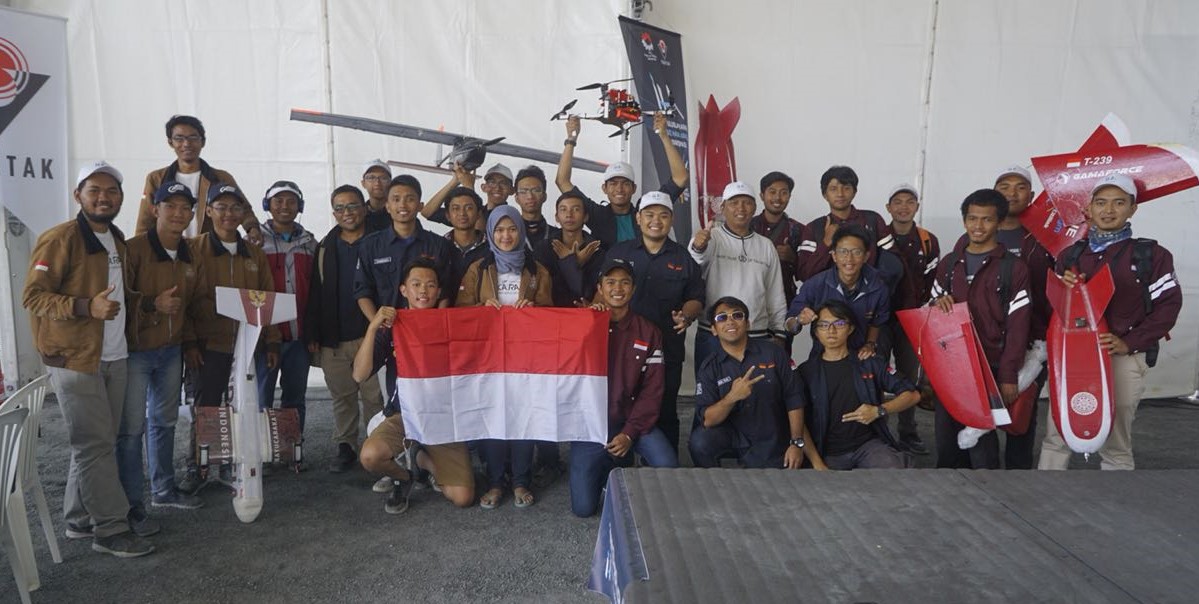Aerospace Engineering ITB Study Program Held an Aerospace Colloquium
By Adi Permana
Editor Adi Permana

BANDUNG, itb.ac.id – Aerospace Engineering study program ITB, Faculty of Mechanical and Aerospace Engineering ITB (FTMD ITB), held an Aerospace Colloquium titled "Airplane Structure Analysis: a Boeing Engineer Experience" on Friday (18/2/2022). Today colloquium presented a very prominent figure in the aerospace field, a Senior Structure Analyst of Boeing Aircraft Company, Ir. Cecep Hl. Jauhari.
Cecep began his presentation by explaining various competencies that are required when analyzing the structure of an aircraft. "Aircraft structural analysis is not limited to its airframe and engine, there are many other important factors and components that need to be analyzed," he explained. One example of that is the airplane electrical system, in which even its packaging box has a complex structure. The airplane cockpit also has a complex structure that can be analyzed in depth.
Principally, airplane structure can be divided into two major systems: airframe and mechanical, ECS and electrical equipment. The airframe consisted of structures such as space frame, trusses, engine mounting, semi-monocoque, beam, and many others. An airplane is also equipped with components such as hydraulic equipment, brackets, joint parts, mechanical components, piping system, tank, and ducting. The interior aspects of an airplane include seat, stow bin, lavatory, galley, crew rest, cargo handling fittings, and ground support.
The structural engineer needs to ensure that the airplane is capable to endure every probable condition during its operational life. The structural analyst engineer works with the structural design engineer to create the optimal design, and with the industrial engineer to handle the production and fleet-repair process. "The structural analysis must be carried out to the highest technical standard. To fulfill this responsibility, a structural analyst engineer depends on their technical education and their lifelong professional experience," said Ir. Cecep.
In addition to that, the plane structure is also equipped with various loading systems. The loading systems that are installed on the airframe are aero load, floor load, cabin pressure, wing fuel pressure, bird impact, thermal flutter, miscellaneous loads, cargo load, landing load, sonic, and crash. For the mechanical there are pilot load, abuse load, pressure load, rotating motor, thermal, dynamic, acceleration, jamming, and burst load.
Ir. Cecep then explained the design and analysis technical requirements of an airplane that need to be fulfilled. "First is regarding the design program requirements and structural design principles, then technical standards from the authority or governmental regulatory body, and then the airline customer requirements," explained Ir. Cecep. Moreover, the safety and security aspect of an airplane is very crucial because it directly affects other aspects.
The material aspect of the airplane is also very crucial and must be met properly. An analyst must have a full understanding of the physical properties and the production process of a material, and also be capable of evaluating the success of an airplane. He also needs to avoid selecting the production process which had previously proven to induce negative effects on the airplane.
"The structural analyst also needs to communicate with other analysts from different fields such as material analyst, specification analyst, and design-score analyst," explained Cecep. Other important things that must be mastered by an aircraft structural analyst engineer are the aircraft structural configuration and its free body diagram.
Reporter: Yoel Enrico Meiliano (Food Engineering, 2020)
Translator: Favian Aldilla R (Civil Engineering, 2019)

.jpg)
.jpg)
.jpg)
.jpg)
.png)



